Competitive benchmarking is no longer just a best practice—it’s essential. It allows businesses to evaluate their brand’s performance by comparing metrics such as revenue, brand awareness, and social media engagement against their competitors, optimize processes, and identify growth opportunities. Defining clear objectives for the benchmarking process and regularly updating them are crucial to sustaining competitive advantages in the market. Whether you are a startup or a seasoned business leader, competitive benchmarking equips you with actionable insights that drive your company forward.
This guide will explore the definition of competitive benchmarking, key metrics, detailed examples from top-performing companies, and a step-by-step analysis process to ensure you leverage benchmarks effectively.

The 4 Major Types of Competitive Benchmarking
- Performance Benchmarking is the most common form of benchmarking and focuses on comparing quantitative metrics like revenue, market share, or customer satisfaction. Competitor benchmarking compares a brand's performance against its rivals using key performance indicators to identify strengths and weaknesses. It involves analyzing and understanding the digital marketing strategies of rival brands, enabling companies to refine their marketing strategies, enhance brand positioning, and stay updated on competitive trends.
Example: A SaaS company may compare its customer acquisition cost (CAC) with competitors to evaluate its marketing efficiency.
- Process Benchmarking goes beyond outcomes and digs into how things are done within an organization. By analyzing workflows and operations, you can identify inefficiencies and improve internal processes. Internal benchmarking is often used to analyze a company’s performance across its departments or divisions, but it has limitations. Therefore, combining it with competitive benchmarking can provide a more comprehensive view and help improve market position by comparing it with external competitors.
Example: A logistics company benchmarking its supply chain against a market leader might uncover opportunities for faster delivery times or cost reductions through automation.
- Strategic Benchmarking focuses on long-term goals, innovation, and market positioning. This form of benchmarking involves looking at the broader picture, including how competitors prepare for future growth and technological advancements.
Example: A renewable energy firm may benchmark its R&D investments and sustainability initiatives against industry leaders to ensure alignment with market trends.
- Functional Benchmarking compares business functions like human resources, IT, or customer service. This helps organizations adopt best practices in specific areas, even if the comparison is made against companies from different industries.
Example: A retail company might benchmark its customer service metrics against leading tech companies to offer a seamless omnichannel experience.
Choosing Competitors to Benchmark Against
Choosing the right competitors to benchmark against is crucial for getting the most relevant insights from competitive benchmarking. Here are some tips for selecting the most relevant competitors:
- Identify Direct Competitors: Identify your direct competitors who offer similar products or services to the same target market. These competitors provide the most relevant benchmarks for your business.
- Consider Industry Leaders: Benchmarking against industry leaders can help you identify best practices and areas for improvement. These companies often set the standards for the industry, and learning from their strategies can provide valuable insights.
- Consider the Size and Market Share of Competitors: Benchmarking against competitors with similar size and market share can help you identify areas for improvement and make data-driven decisions. This ensures that the comparisons are relevant and actionable.
- Consider the Location of Competitors: Benchmarking against competitors in different locations can help you identify best practices and areas for improvement in other markets. This is particularly useful for businesses looking to expand into new regions.

Key Metrics to Track in Competitive Benchmarking
Choosing the right metrics is crucial to obtaining actionable insights when conducting a competitive benchmarking analysis. However, performing a thorough competitor analysis is equally important to gain insights into key competitors’ market positioning, strengths, and weaknesses. Here are some essential metrics:
It is also critical to use sales data to identify performance gaps. Analyzing this data can reveal areas where a company is failing, such as slower customer acquisition rates compared to industry standards.
- Customer Satisfaction: Metrics such as Net Promoter Score (NPS) and Customer Satisfaction (CSAT) provide insight into how your services or products compare to those of competitors regarding customer loyalty and happiness. Regularly benchmarking these scores helps businesses adjust customer experience strategies.
Example: Zappos, renowned for its customer service, continuously benchmarks customer feedback, setting standards for fast and friendly service that other retailers try to match.
- Market Share: Knowing your company’s position relative to competitors is critical for strategic planning. Tracking market share over time allows companies to see how well they capture and retain customers.
Example: In the fast food industry, McDonald’s continuously benchmarks its global market share against Burger King and competitors to assess growth potential in various regions.
- Product Performance: Understanding how your products compare to others is essential. This includes customer reviews, product features, and pricing strategies.
Example: Apple benchmarks the battery life, processing speed, and other hardware features of its products against Samsung, using these insights to create superior versions with each product iteration.
- Financial Health: Gross margins, revenue growth, and operating costs are critical benchmarks to track. By monitoring financial health against competitors, businesses can spot inefficiencies or areas for reinvestment.
Example: Walmart benchmarks its operating costs per store against Amazon, continuously optimizing its physical retail operations to remain competitive in a digital-first world.
- Website Performance & SEO: Online visibility is vital in today’s digital age. Tools like SEMrush and Ahrefs allow you to compare your online presence to competitors’ by comparing SEO rankings, conversion rates, and overall traffic performance.
Example: Companies often benchmark their domain authority and organic traffic metrics against competitors in their industry to capture higher search engine rankings.
Benchmarking Examples of Companies
Here are some real-world examples of competitive benchmarking that demonstrate its effectiveness:
- Coca-Cola vs. Pepsi: These beverage giants regularly benchmark their advertising strategies, global market reach, and product diversification. By comparing their internal processes and product features to their leading competitors, Coca-Cola can identify unique selling points such as its sustainability initiatives in packaging, which set it apart from Pepsi’s efforts to reduce plastic waste.
- Amazon vs. Netflix (Content Streaming): Both companies operate in the entertainment space but benchmark different aspects of their services. While Netflix benchmarks its original content spend against competitors like HBO, Amazon Prime Video may focus on subscription metrics and customer churn rates.
- Tesla vs. Ford (Electric Vehicles): In the automotive industry, Tesla often benchmarks battery performance, autonomous driving technology, and software updates against legacy car manufacturers. By understanding how traditional automakers are adapting, Tesla continues to lead in innovation and market share.


Analyzing Competitor Performance
Analyzing competitor performance is a crucial step in competitive benchmarking. It involves gathering data on competitors’ strengths, weaknesses, and market trends. Companies can use competitor benchmarking tools to collect and analyze data on their competitors’ performance, including their marketing and sales strategies, customer feedback, and financial reports. By examining this data, companies can identify areas for improvement and develop strategies to gain a competitive advantage.
Social media platforms can also provide valuable insights into competitor performance, including their social media presence, engagement, and customer service. For example, by monitoring a competitor’s social media activity, a company can gauge customer sentiment and identify successful engagement strategies. Financial reports and industry publications can also offer insights into competitors’ financial health and strategic initiatives.
Competitive benchmarking analysis can help companies identify market trends, industry best practices, and emerging trends that can inform their business strategies. By understanding how competitors are performing and what strategies they are employing, businesses can make informed decisions to enhance their performance. This comprehensive analysis helps identify areas for improvement, anticipate market shifts, and stay ahead of the competition.
Driving Performance Improvements
Driving performance improvements is a key objective of competitive benchmarking. By identifying areas where they can improve, companies can develop strategies to enhance their business performance, increase revenue growth, and improve customer satisfaction. Competitive benchmarking can help companies identify industry benchmarks and best practices that they can adopt to improve their performance.
Companies can also use competitor benchmarking tools to gather data on their competitors’ performance and identify areas where they can improve. For example, if a competitor has a more efficient supply chain, a company can analyze the processes and technologies used and implement similar improvements. By examining this data, companies can develop strategies to stay ahead of their competitors and gain a competitive edge.
Strategic benchmarking can help companies identify opportunities to innovate and improve their products and services. For instance, by benchmarking against industry leaders, a company can identify new technologies or business models that can be adopted to enhance its offerings. Additionally, understanding market dynamics and industry trends can provide valuable insights into future growth opportunities.
In summary, competitive benchmarking is about identifying weaknesses and leveraging strengths and opportunities to drive continuous improvement. By staying informed and proactive, businesses can remain competitive and achieve long-term success.
Tools to Enhance Competitive Benchmarking
Here’s a list of tools you can use to make competitive benchmarking easier:
- SEMrush: Known for its SEO capabilities, SEMrush allows you to benchmark digital performance, from keyword rankings to advertising spend.
- Ahrefs: This tool provides deep insights into website traffic and backlinks, which are crucial for benchmarking online visibility.
- Google Analytics: Ideal for website performance benchmarking. Compare your site’s traffic, bounce rates, and conversions against industry standards.
- HubSpot: HubSpot offers a suite of marketing analytics tools that help you benchmark customer acquisition, email open rates, and social media engagement.
Using a competitor benchmarking tool lets you gain valuable insights into competitors and market dynamics. By strategically selecting whom to measure against and analyzing specific metrics, you can gain insights into enhancing customer experiences and overall business success.
Conclusion
Competitive benchmarking is a powerful tool that provides a roadmap for sustainable growth by emphasizing superior customer service as a critical element in establishing a competitive advantage. Your business can thrive in an increasingly competitive environment by continuously measuring your brand’s performance against industry leaders and adopting best practices.
Conclusion
Competitive benchmarking is a powerful tool that provides a roadmap for sustainable growth. Your business can thrive in an increasingly competitive environment by continuously measuring your brand's performance against industry leaders and adopting best practices.

Frequently Asked Questions (FAQ) About Competitive Benchmarking
What is the primary goal of competitive benchmarking?
The primary goal of competitive benchmarking, specifically external benchmarking, is to identify areas for improvement by comparing your business performance and processes against those of industry competitors. This helps companies innovate, optimize, and stay competitive.
How often should I conduct competitive benchmarking?
Benchmarking should be conducted quarterly or annually to stay updated with market trends and obtain crucial insights to refine strategies and enhance strategic decision-making.
Which industries benefit most from competitive benchmarking?
While all industries can benefit, highly competitive sectors like retail, technology, and manufacturing see the most significant impact from evaluating and analyzing various marketing efforts and campaigns through competitive benchmarking.
How do I choose the right metrics for benchmarking?
The best metrics align with your business goals and marketing strategy. For example, if customer satisfaction is key, use metrics like NPS or CSAT. If market share is critical, focus on revenue growth and customer retention.
What are some challenges in competitive benchmarking?
Common challenges include obtaining reliable competitor data, choosing relevant metrics, and implementing actionable insights-based changes.

Ready to Outperform Your Competitors with Competitive Benchmarking?
At Asymmetric Marketing, we specialize in helping businesses like yours leverage competitive benchmarking to gain actionable insights and drive growth. Our tailored strategies are designed to give you an edge in the market.
🔍 Start Your Competitive Benchmarking Journey Today!
📞 Schedule a free consultation
💡 Explore our expert strategies for outperforming your competition
Don’t wait to gain the insights that will elevate your business—reach out to us today!
About the author
Mark A. Hope is the co-founder and Partner at Asymmetric Marketing, an innovative agency dedicated to creating high-performance sales and marketing systems, campaigns, processes, and strategies tailored for small businesses. With extensive experience spanning various industries, Asymmetric Marketing excels in delivering customized solutions that drive growth and success. If you’re looking to implement the strategies discussed in this article or need expert guidance on enhancing your marketing efforts, Mark is here to help. Contact him at 608-410-4450 or via email at mark.hope@asymmetric.pro.

